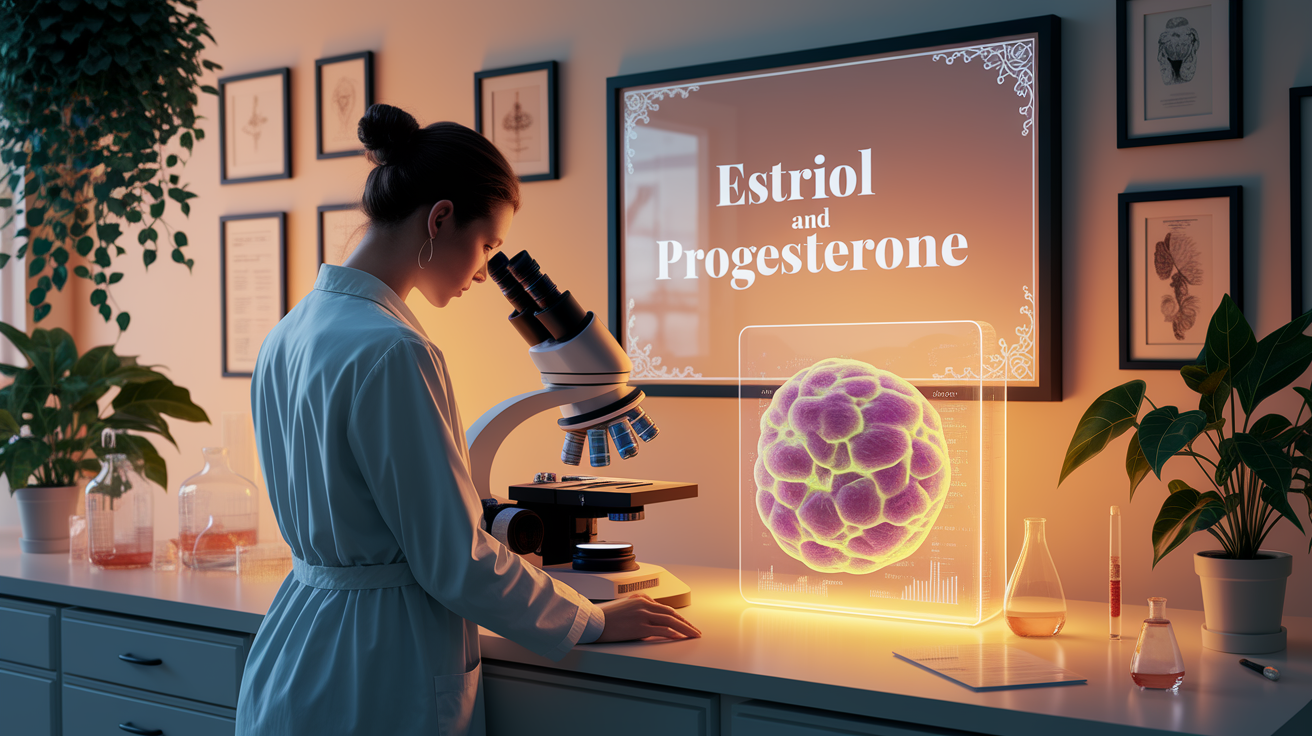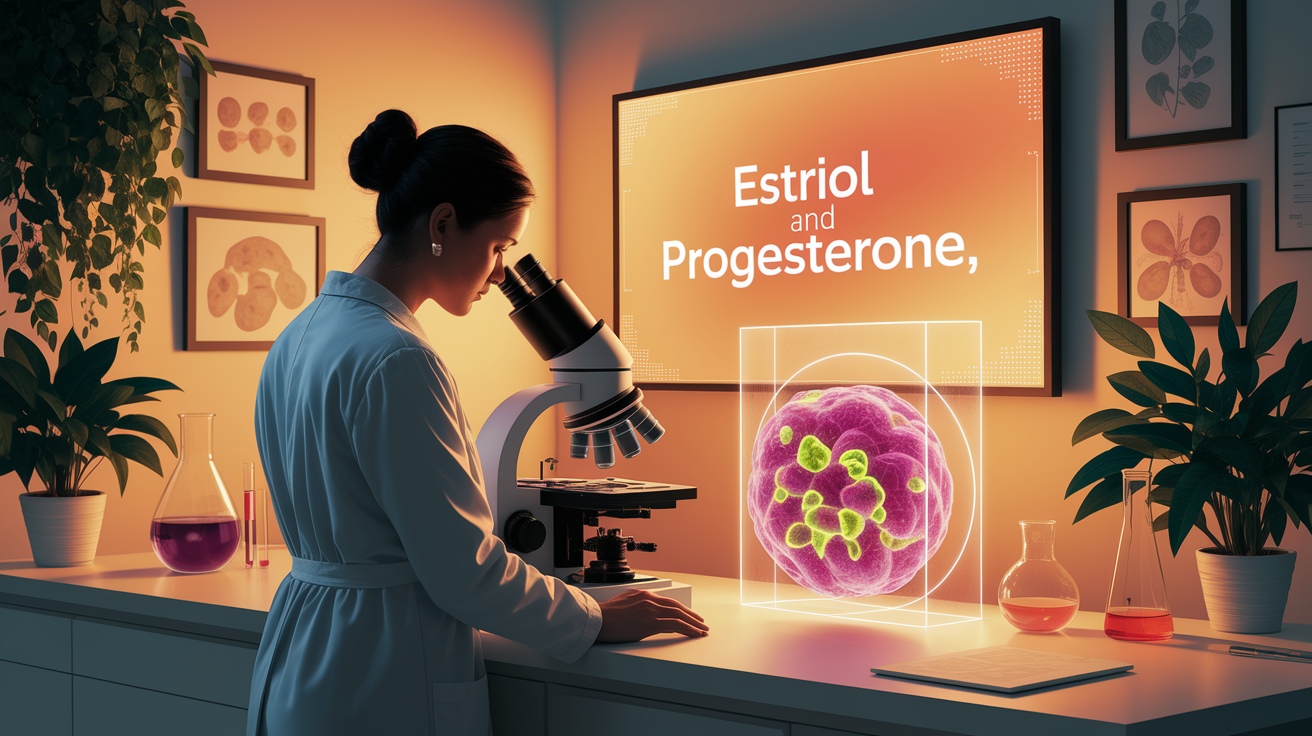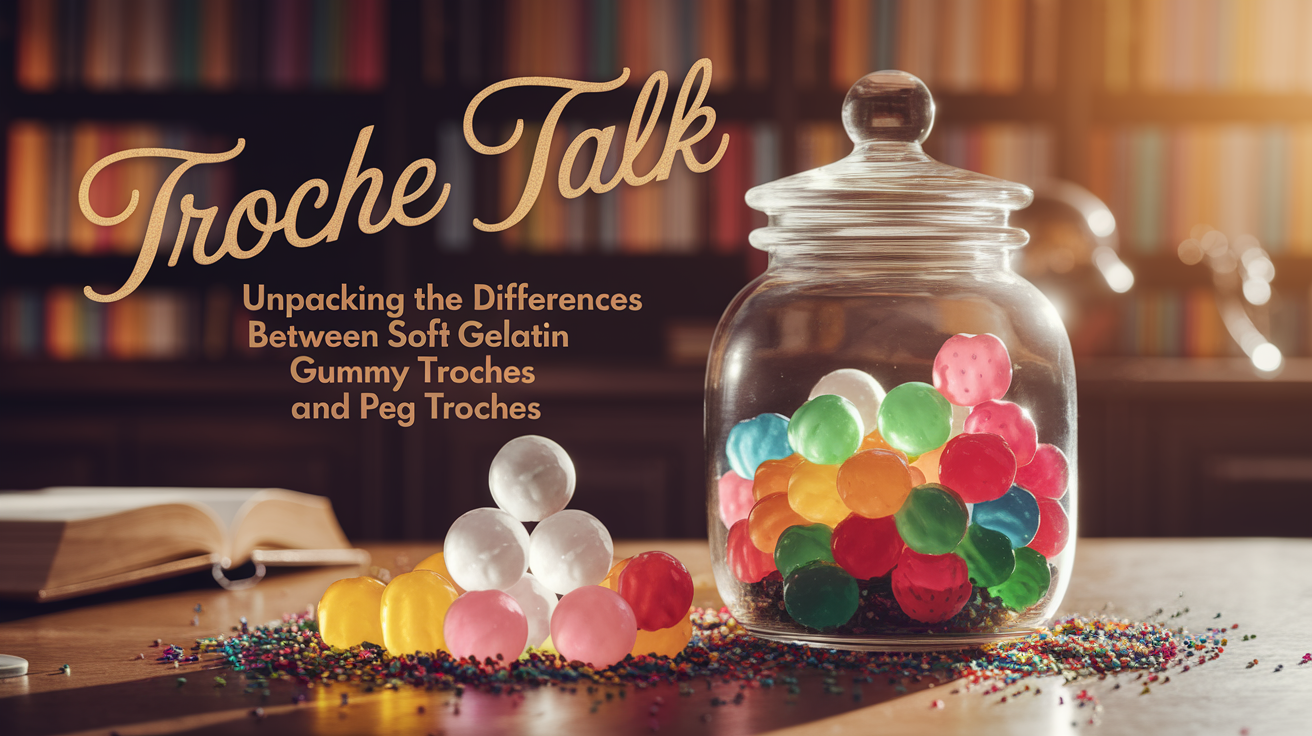When I first stumbled upon the intricate dance between hormones and cancer, I was astounded by how our biological makeup influences disease risk. Did you know that the right balance of hormones, like estriol and progesterone, might protect against cancer? Let's dive deep into this relationship.
Understanding Estrogens: The Triad of Influence
Estrogens play a crucial role in our bodies. They are not just hormones; they are powerful influencers of health. Among the three main estrogens—estradiol, estrone, and estriol—each has its unique role and impact. Let’s dive into their characteristics and how they affect our health, particularly concerning cancer risk.
1. The Three Estrogens
- Estradiol (E2): This is the most potent form of estrogen. It is vital during the reproductive years and is linked to various bodily functions. However, elevated levels can increase the risk of certain cancers.
- Estrone (E1): This estrogen becomes dominant after menopause. While it is less potent than estradiol, it still carries a risk of promoting cancer.
- Estriol (E3): The weakest of the three, estriol is primarily produced during pregnancy. Interestingly, it may have protective effects against cancer, acting as a counterbalance to the stronger estrogens.
2. How Each Estrogen Affects Cancer Risk
Understanding the cancer risks associated with these estrogens is essential. Estradiol, while necessary for many functions, can be a double-edged sword. Its potency means that when levels are high, the risk of cancers like breast and endometrial cancer increases. On the other hand, estrone, although less potent, can still contribute to cancer risk, especially in post-menopausal women.
Now, let’s talk about estriol. It’s fascinating because, despite being the weakest estrogen, it may actually help mitigate the risks posed by estradiol and estrone. Think of it as a safety net. It interacts differently with estrogen receptors, which can lead to varied effects depending on the tissue type. This context-dependent nature of hormones is crucial. It’s not just about having these hormones; it’s about how they function in different environments.
3. Estriol's Unique Positioning
Estriol stands out among the estrogens. Its unique characteristics suggest that it may offer protective benefits. Some studies indicate that higher levels of estriol during pregnancy correlate with a reduced risk of breast cancer later in life. Isn’t that intriguing? It’s like estriol is quietly working behind the scenes, potentially safeguarding us.
Moreover, when combined with progesterone, estriol may enhance its protective effects. This combination is an area ripe for further research. It’s essential to explore how these hormones interact, especially in high-risk populations.
4. The Context-Dependent Effects of Hormones
Hormones don’t act in isolation. Their effects can vary significantly based on the tissue type and the overall hormonal environment. For instance, while estradiol might promote cell growth in one tissue, it could have a different effect in another. This variability is why understanding the balance of these hormones is so critical.
"Hormonally, the balance is the tightrope we all have to walk." - Dr. Jane Smith
This quote resonates deeply. It emphasizes the need for a careful approach when considering hormone therapies. The balance of estradiol, estrone, and estriol is not just a matter of quantity; it’s about how they work together.
5. Charting the Estrogens
To visualize the potency and risks associated with these estrogens, here’s a chart:
Estradiol - Highest potency; increases certain cancer risks
Estrone - Medium potency; more prevalent after menopause and riskier
Estriol - Weakest; may provide protective benefits
In summary, the interplay between estradiol, estrone, and estriol is complex yet fascinating. Each estrogen has its role, and understanding these roles can help us navigate the intricate world of hormone health. As we continue to explore these relationships, we may uncover new insights into cancer prevention and overall well-being.
The Role of Progesterone: Friend or Foe?
Progesterone is a hormone that plays a crucial role in the menstrual cycle. But how much do we really understand about it? Let’s dive into its functions, effects, and the ongoing debate about its safety.
Progesterone's Role in the Menstrual Cycle
During the menstrual cycle, progesterone is produced mainly by the ovaries after ovulation. This hormone prepares the uterus for a potential pregnancy. If pregnancy doesn’t occur, progesterone levels drop, leading to menstruation. It’s fascinating how this hormone orchestrates such a delicate balance, isn’t it?
Dual Nature in Different Tissues
Progesterone has a dual nature. In some tissues, it acts as a protector, while in others, it can promote growth. For instance, it can help regulate the lining of the uterus, but in breast tissue, its effects can vary. This duality raises questions: Is progesterone a friend or foe? The answer might depend on the context.
Natural vs. Synthetic Progesterone
When we talk about progesterone, we often compare natural progesterone with synthetic progestins. Natural progesterone, derived from plants, is generally considered safer. In fact, Dr. Emily Larson states,
“Natural progesterone offers a more protective profile in hormone therapy.”On the other hand, synthetic progestins have been linked to increased cancer risks. This contrast is crucial for women considering hormone therapy.
Effects in Combination with Estrogens
Progesterone doesn’t work in isolation. When combined with estrogens, its effects can change dramatically. For example, natural progesterone can counteract the growth-promoting effects of estrogen in the uterus. This interplay is essential for maintaining uterine health. But what does this mean for cancer risk?
Research suggests that natural progesterone may lower breast cancer risk when used in hormone therapy. In contrast, synthetic progestins have been associated with an increased risk. This information is vital for women weighing their options for hormone replacement therapy.
Understanding the Risks
Let’s break down some key points regarding progesterone and cancer risk:
- Natural progesterone: Less associated with cancer risks.
- Synthetic progestins: Increased breast cancer risk.
- Counteracting estrogen: Natural progesterone can help regulate estrogen-driven growth.
- Uterine health: Essential for maintaining a healthy uterine lining.
Table of Breast Cancer Risk
| Type of Progesterone | Breast Cancer Risk |
|---|---|
| Natural Progesterone | Lowered breast cancer risk with hormone therapy |
| Synthetic Progestins | Increased breast cancer risk |
Exploring the protective roles of natural progesterone offers hopeful insights for women's health and cancer risk prevention. It’s clear that understanding these hormonal interactions is crucial. As we continue to learn more, we can make informed decisions about hormone therapy and its implications for our health.
So, what do you think? Is progesterone a friend or foe in your health journey? The answer may not be straightforward, but it’s worth exploring.

Sifting Through the Studies: Estriol's Protection Potential
When we talk about hormones and their effects on our bodies, it's easy to get lost in the complexity. But one hormone, estriol, is gaining attention for its potential protective effects against cancer. I find it fascinating how something produced primarily during pregnancy might play a role in reducing cancer risk. So, let’s dive into the research surrounding estriol and see what we can learn.
Observational Studies on Estriol During Pregnancy
Observational studies have shown that higher levels of estriol during pregnancy correlate with a reduced risk of breast cancer later in life. Isn’t that intriguing? It suggests that the hormonal environment during pregnancy could have lasting effects on cancer risk. These studies often track women over time, comparing those with higher estriol levels to those with lower levels. The results indicate a notable difference in breast cancer incidence.
Preclinical Studies Showing Reduced Cancer Incidence
But it’s not just observational studies that are painting a promising picture. Preclinical studies, particularly those conducted on animal models, have shown significant reductions in mammary cancer incidence when estriol is combined with progesterone. This combination seems to work wonders in countering the effects of chemical carcinogens. It’s like having a protective shield against potential threats. The findings from these studies are compelling and suggest that estriol could be a game-changer in cancer prevention.
Potential Mechanisms for Estriol's Effects
So, how does estriol work its magic? One theory is that it acts as a competitive antagonist to stronger estrogens like estradiol. This means that estriol can bind to estrogen receptors without triggering the same level of activity as its more potent counterparts. Think of it as a gentle hand on the steering wheel, guiding the body without pushing it too hard. Additionally, estriol interacts differently with various estrogen receptors, leading to diverse effects across different tissues. This unique interaction could be key to its protective properties.
The Need for More Human Research
Despite the promising findings, we must acknowledge a significant gap in research. Most of the studies conducted thus far have been observational or preclinical. We need more human studies to fully understand estriol's potential as a preventive agent in cancer treatment. It’s essential to explore how estriol and progesterone work together in real-world scenarios. After all, what works in a lab may not always translate directly to human health.
"Estriol's protective effects warrant more research and consideration in therapy." - Dr. Robert Chen
Dr. Chen's words resonate deeply. They highlight the urgency for further exploration into estriol's role in hormone therapy and cancer prevention. We have a wealth of data from animal studies and observational research, but translating that into human applications is crucial.
Key Data on Estriol and Cancer Risk
To summarize some of the key findings, I’ve compiled a table below:
| Study Type | Findings |
|---|---|
| Observational Studies | Higher estriol levels correlate with reduced breast cancer risk. |
| Preclinical Studies | Significant reduction in mammary cancer incidence in animal models. |
As we sift through the studies, it becomes clear that estriol holds promise. Its unique properties and interactions with estrogen receptors could pave the way for new preventive strategies against cancer. However, we must continue to advocate for comprehensive research to unlock its full potential. The journey of understanding estriol is just beginning, and I’m excited to see where it leads us.
The Synergistic Effects: Estriol and Progesterone Together
Have you ever wondered how hormones can shape our health? The combination of estriol and progesterone is an intriguing topic. Let’s dive into the hypothesis of combining these hormones and explore their potential benefits.
Understanding the Hypothesis
The idea behind combining estriol and progesterone is quite fascinating. Estriol, often considered the weakest estrogen, is primarily produced during pregnancy. It has been suggested that it may offer protective effects against cancer. On the other hand, progesterone plays a crucial role in regulating various bodily functions, especially during the menstrual cycle and pregnancy.
When we combine these two hormones, the hypothesis is that they might work synergistically. This means they could enhance each other's positive effects while minimizing risks. Imagine a team where each member brings their strengths to the table. That’s what estriol and progesterone could do for hormone therapy.
Benefits Over Synthetic Options
Now, let’s talk about the potential benefits of using estriol and progesterone compared to synthetic hormone therapies. Many synthetic options have been linked to increased cancer risks. For instance, synthetic progestins can elevate the risk of breast cancer. In contrast, natural progesterone, especially when used with estriol, appears to be less risky.
- Lower Cancer Risk: Studies suggest that combining estriol with natural progesterone may lower the risk of hormone-driven cancers.
- Higher Safety Profile: Natural hormones tend to have a better safety profile than their synthetic counterparts.
As Dr. Linda Grey puts it,
“Combining these compounds could rewrite our approach to hormone therapy.”This statement encapsulates the excitement surrounding this combination.
Exploring Risks of Traditional Hormone Therapies
While hormone therapy can be beneficial, it’s essential to recognize the risks associated with traditional options. Many women have experienced adverse effects from synthetic hormones. These risks include increased chances of certain cancers, cardiovascular issues, and other health concerns.
By focusing on natural hormones like estriol and progesterone, we may be able to avoid these pitfalls. They offer a more balanced approach, potentially providing the benefits without the same level of risk. It’s like choosing a safer path on a hike; you still reach your destination, but with fewer obstacles along the way.
Advocating for Future Research
Despite the promising nature of combining estriol and progesterone, we need more research. Current studies hint at their potential, but there’s still a lot to learn. I believe that clinical trials focusing on high-risk populations are crucial. These studies could help us understand how these hormones work together and their long-term effects on health.
We need to ask ourselves: What if this combination could change the landscape of hormone therapy? What if it could provide a safer alternative for women at risk of hormone-related cancers? The possibilities are exciting, and the need for impactful research is clear.
Conclusion
In summary, the combination of estriol and progesterone presents a fascinating area of study. With the potential for lower cancer risk and a higher safety profile, it’s worth exploring further. As we continue to investigate these hormones, we may uncover new insights that could benefit many women. Let’s keep the conversation going and advocate for the research that could lead to safer, more effective hormone therapies.
Charting the Future: More Research Needed
As we delve into the complex world of hormones and their relationship with cancer, one thing becomes clear: we need more human studies. The potential benefits of understanding hormone interactions, particularly between estriol and progesterone, could be groundbreaking. Yet, the current landscape of research is lacking. So, what can we do to change this?
The Need for Human Studies
First and foremost, we must emphasize the urgent need for human studies. While animal models provide valuable insights, they cannot fully replicate human biology. The nuances of our hormonal systems are intricate. For instance, the balance between estriol, progesterone, and other hormones plays a crucial role in cancer risk. Without human trials, we risk missing out on vital information that could lead to effective cancer prevention strategies.
Potential Population Targets for Trials
Who should we target for these studies? Several populations stand out:
- Women with a Family History of Cancer: These individuals are at a higher risk and could benefit significantly from tailored hormone therapies.
- Post-Menopausal Women: As estrogen levels decline, understanding how to balance hormones becomes critical.
- Pregnant Women: Research indicates that higher estriol levels during pregnancy may correlate with a reduced risk of breast cancer later in life.
By focusing on these groups, we can gather more relevant data that reflects the complexities of hormone interactions in real-world scenarios.
Gaps in Current Research
Despite the promising findings surrounding hormones like estriol and progesterone, significant gaps remain in our understanding. For example, while we know that estriol is generally considered the weakest estrogen, its protective effects against cancer are still underexplored. The combination of estriol and progesterone shows potential, yet direct human studies are scarce. This lack of data leaves us with more questions than answers.
Moreover, many existing studies rely on observational data rather than controlled trials. This can lead to misleading conclusions. We need rigorous research to clarify the roles these hormones play in cancer prevention. Are they truly protective? Or do they carry risks we haven't yet identified?
Call to Action for the Medical Community
It's time for the medical community to take action. We must advocate for increased research funding in this area. The potential for breakthroughs in cancer prevention is immense. As Dr. Alice Kim aptly stated,
"The future of cancer prevention lies in understanding our hormones better."We need to heed this call and push for more studies that explore the intricate relationships between hormones and cancer risk.
Encouraging physicians to consider these combinations in practice is vital. They need to be aware of the latest research and understand the potential benefits of hormone therapy. By doing so, we can create a more informed healthcare environment that prioritizes patient safety and effective cancer prevention strategies.
In closing, the evidence indicates a bright future for hormone research, with exciting possibilities on the horizon. By focusing on human studies, targeting the right populations, and addressing the gaps in current research, we can pave the way for innovative approaches to cancer prevention. Let's work together to ensure that the future of cancer prevention is not just a hope but a reality.
TL;DR: The combination of estriol and progesterone shows promise in cancer prevention, advocating for balanced hormone therapy while calling for more extensive human studies.



